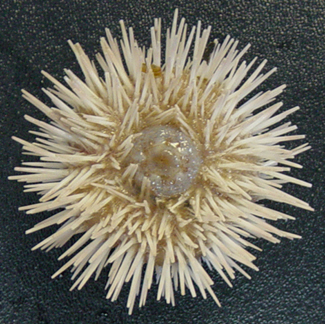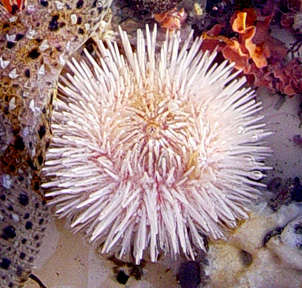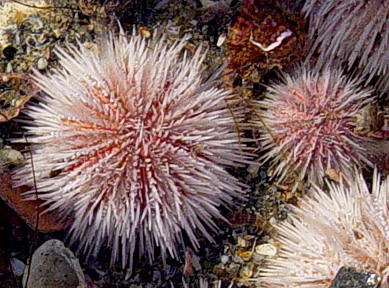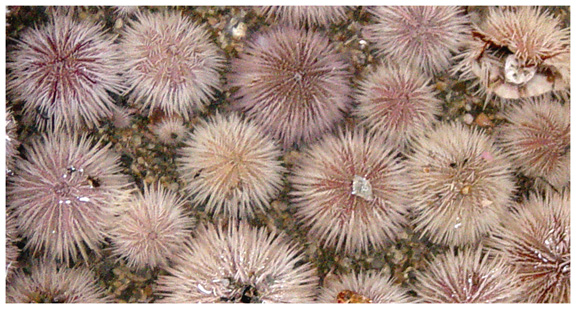

Dorsal (left) and ventral views. This subspecies, L. variegatus carolinus has a light red test and abundant
white spines, whereas L. variegatus variegatus has a green test and green spines.
Test diameter is ~5.5 cm.
| Abundance: very common | Distribution: inner to mid-shelf (10-30 m) |
Scroll down to review gallery images.


Dorsal (left) and
ventral views. This subspecies, L. variegatus carolinus has a light
red test and abundant
white spines, whereas L. variegatus variegatus has a green test and
green spines.
Test diameter is
~5.5 cm.
.jpg)
This living specimen
was photographed on the side of an aquarium.
Note the "aristotle's lantern" teeth, just visible at the centrally-located
mouth. This organism has long, fine tube feet that can be seen extending
around the specimen's periphery. These tube feet have suckers that help
the organism to move and to grab food particles.


Ventral (left) and
dorsal views. These specimens
range from 3 to 7 cm in diameter.

This species was particularly abundant in the inner-shelf region, in relatively
shallow waters (10-20 m). It was the most abundant species collected
(using beam trawls) on the continental shelf.
To view
a video clip of this organism in an aquarium, click on the image below.
Look carefully to see the long, fine tube feet. Also note the bivalve shell
the organism
has selected to decorate its test. This behavior is common with L. variegatus
carolinus
as it is epifaunal (lives on the sediment surface), and uses the decoration
as camoflage to blend in with the shelly sediments.
